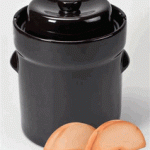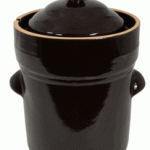The Great Wall of China was built to keep out the invading hordes of Mongols led by the infamous Genghis Khan, everyone knows the wall didn’t work but who would have guessed if it had not been for the great wall the world may not have sauerkraut. How does China equate to what the world thinks of as a German concoction? It’s quite simple really, the thousands of workers on the wall had to work through all four seasons, they didn’t get the winter off so they found that fermenting cabbage and rice wine in what we now commonly call a sauerkraut crock was a simply way to prepare food that saw them through the lean months.
When Genghis Khan took the wall, he also took a liking to this fermented mixture and adopted the recipe for his own. It was the fact that it stayed edible for long periods of time that suited Genghis to a “T” as he roamed incessantly, eventually bringing the recipe to Europe.
Early in the 16th century it was the Germans who began to dry cure cabbage with salt which pulled the water from the vegetable. This was allowed to ferment, turning the sugar into a form of lactic acid which in turn acted as the preservative. The Germans were never known as a seafaring nation but their neighbors, the Dutch, most certainly were and they began taking “sour cabbage” with them on their sea voyages which could literally last for years. Sauerkraut was found to be a great food to combat scurvy, a dreaded disease of the time, especially for sailors.
As the world continued to be explored, sauerkraut went with them and eventually the dish ended up in the States. No one knows for sure who brought it or when it was first brought to the Americas but the word does show up in a 1776 dictionary.
The first sauerkraut was brought to the Americas in wooden casks but it did not take the settlers long to develop a sauerkraut crock so that they could produce it in smaller batches for use and storage during the long, hard winters of what is now known as Pennsylvania.
Sauerkraut is simply shredded cabbage and salt. Today, back in China where it first came from and in Korea it is heavily flavored with spices, the spices add flavor but have no effect on the curing process, try it as a wonderful addition to any menu, especially sausage.








